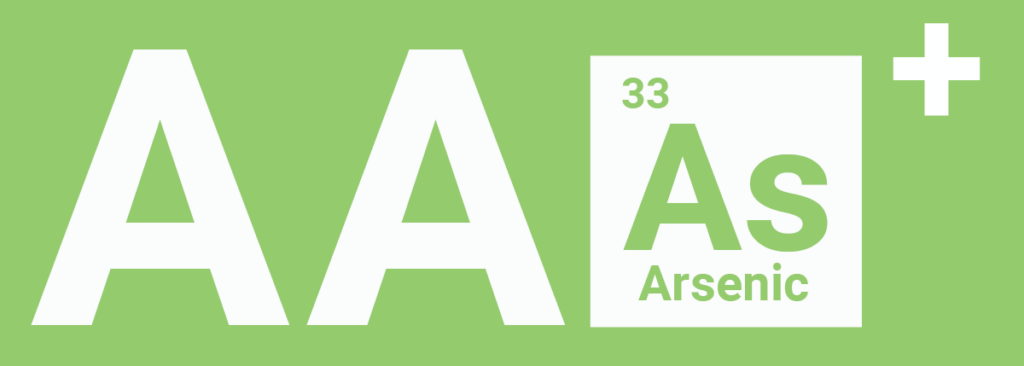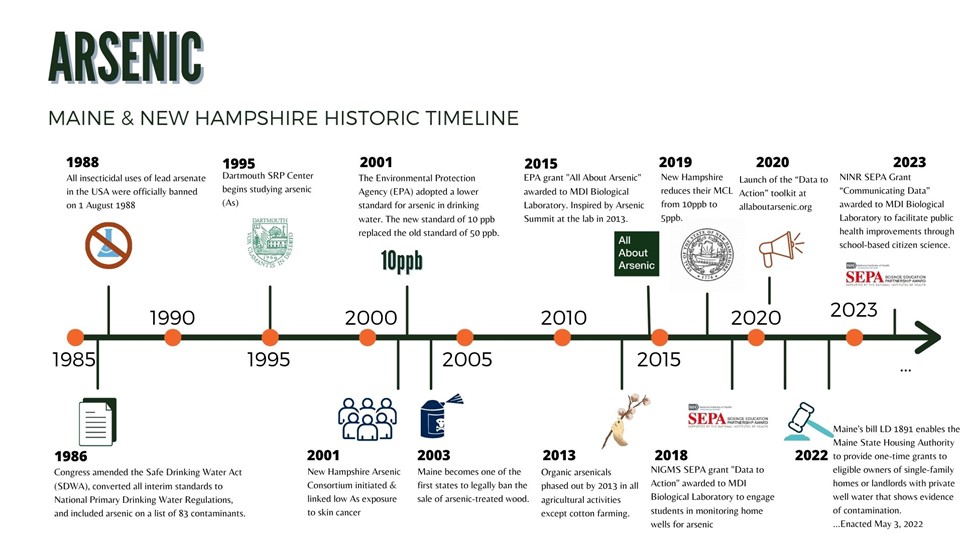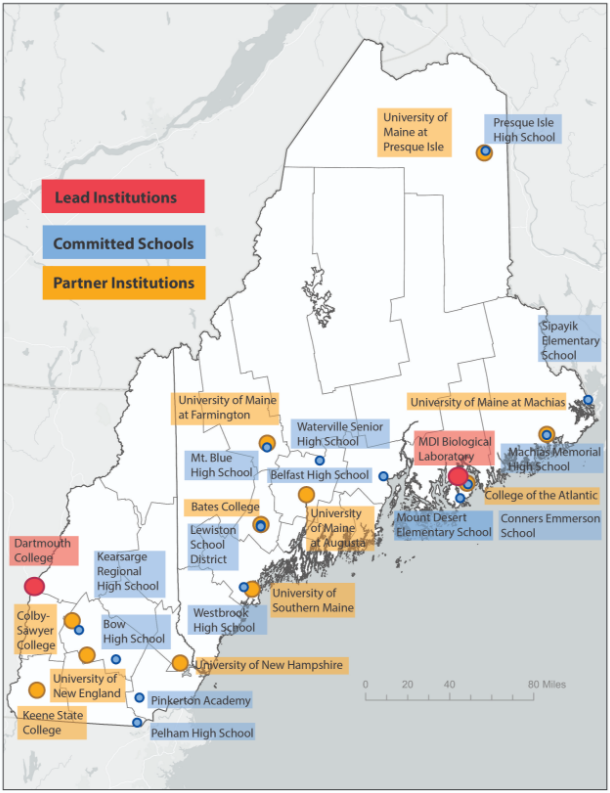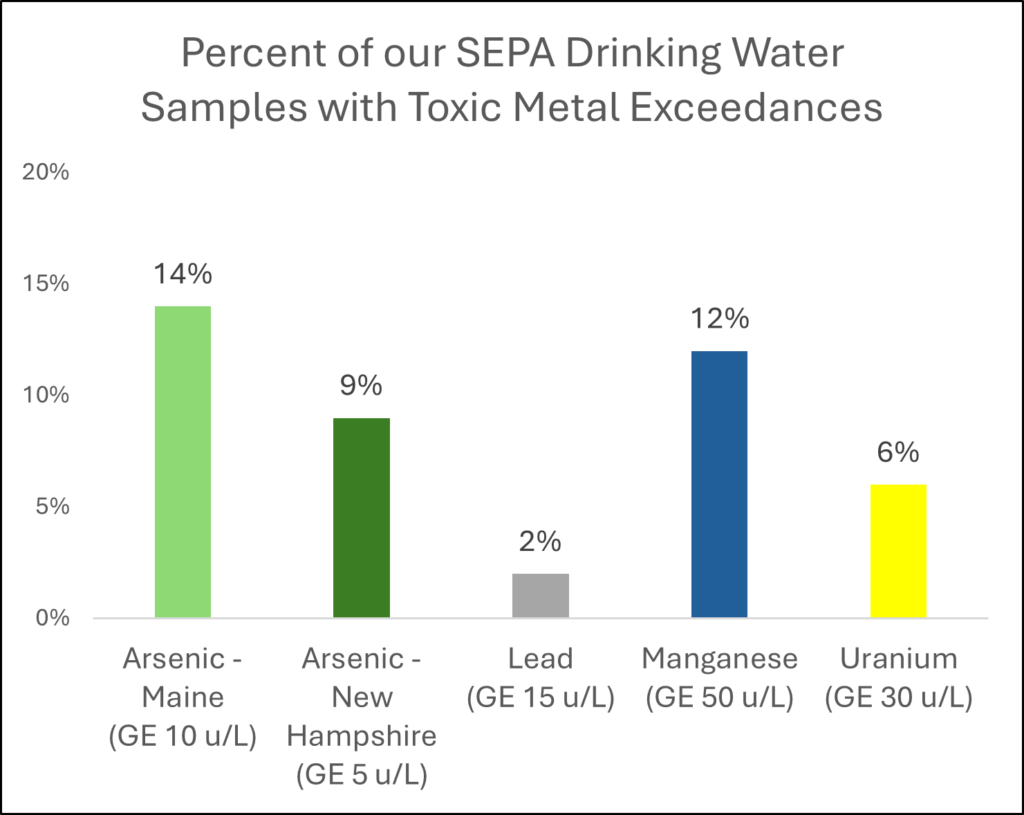
Communicating Data
“Promoting environmental health literacy through science communication and intergenerational learning in a K-12 safe drinking water citizen science project (Communicating Data)”
The Communicating Data project is a school-based citizen science effort to collect drinking water samples to test for toxic metals. Starting in 2023, this is our second 5-year NIH-NINR Science Education Partnership Award (SEPA) to advance a national model of STEM education. This project aims to engage students as citizen scientists and provide them with the tools and skills to test wells in their communities and analyze the data. As part of the project, students will:
- Use the scientific process to ask real-world questions about drinking water contamination.
- Collect drinking water samples in their homes and communities for analysis of toxic metals.
- Create data visualizations to include in outreach materials, videos, and podcasts to increase awareness about safe drinking water.
- Mobilize communities to address issues related to drinking water safety through community meetings, forums, advocacy, and events.
The Legacy of All About Arsenic+
This collaborative public health project was initiated in 2015 by researchers at MDI Biological Laboratory (MDIBL) and Dartmouth College’s Toxic Metals Superfund Research Program. With new funding from NIH SEPA, we will engage teachers and students across Maine and New Hampshire in collecting drinking water from both public and private systems with a focus on multiple toxic metals, including arsenic, uranium, manganese, and lead. Hence, the “plus”!
Arsenic is a known toxin and a contaminant in private well water used for drinking water. New England has a relatively high probability of arsenic in domestic wells compared to other areas of the country, as seen in the map below. We are now exploring the prevalence of other toxic metals in both public and private drinking water through our school-based program “Communicating Data”.

Events related to arsenic over time including the implementation of the All About Arsenic project as an EPA and SEPA project.
How does the program work?

“Communicating Data” engages teachers and researchers throughout Maine and New Hampshire in expanding drinking water testing for arsenic and other toxic metals. There is a focus on building science communication skills among students so that they can effectively use their water sampling data to increase awareness of drinking water contamination issues in their communities.
Since 2019, we have worked with 41 schools and 5,200 students, and connected 45 teachers with 22 Scientist Partners. Our 5,200 students have:
- Collected over 4,300 drinking water samples which have informed the Maine Center for Disease Control and the New Hampshire Department of Environmental Services, two government agencies working to improve well water testing rates and public health.



- Testified at legislative hearings in Maine! Following testimony from students participating in the project, $400,000 will now allow Maine State Housing Authority to provide one-time grants to eligible owners of single-family homes or landlords with private well water that shows evidence of contamination. LD1891, HP 1401 An Act to Continue Supporting Safe Drinking Water for Maine Families
2024-2025 Participating SEPA Schools
| School | Location |
| Belfast Area High School | Belfast, ME |
| Bow High School | Bow, NH |
| Colby-Sawyer College | New London, NH |
| Conners Emerson | Bar Harbor, ME |
| Easton High School | Easton, ME |
| Edward Little High School | Auburn, ME |
| Kearsarge Regional High | North Sutton, NH |
| Pelham High School | Pelham, NH |
| School | Location |
| Pemetic Elementary | Southwest Harbor, ME |
| Sipayik Elementary School | Pleasant Point, ME |
| Sumner Memorial High | Sullivan, ME |
| Swans Island Elementary | Swans Island, ME |
| Waterville Senior High | Waterville, ME |
| Westbrook High School | Westbrook, ME |
| Windham High School | Windham, ME |
New Directions – The data is telling us what to focus on next!
As we continue to grow, there is a more focused effort investigating toxic metals other than arsenic. Our students have been finding elevated levels of manganese, lead, and uranium as part of their drinking water collection process.

Arsenic
Chronic exposure to drinking water with elevated arsenic is associated with diabetes and increased risk of cancers of the bladder, lungs, liver, and other organs.
A USGS model estimates that 2.1 million people throughout the U.S. may be drinking domestic well water high in arsenic – above the EPA Maximum Contaminant Level (MCL) of 10 µg/L.
In states like Maine and New Hampshire, wells are usually drilled into hard crystalline bedrock, which tends to increase the likelihood of high arsenic. Maine and New Hampshire also have among the highest per capita reliance on private wells for drinking water in the United States (ME: 56% and NH: 46%), yet testing rates are low.

The Maximum Contaminant Level (MCL) for Arsenic in New Hampshire is 5 µg/L – lower than the national MCL of 10 µg/L. We’re challenging our SEPA students in Maine to tell their data-supported stories to inspire Maine Legislators to change Maine’s limit from 10 µg/L down to 5 µg/L as well!
Manganese
Chronic exposure to high levels of manganese in drinking water can contribute to manganism, a neurological disorder. However, the EPA has set a National Secondary Drinking Water Regulation for Manganese of 50 µg/L. “When manganese is present in drinking water at levels above the secondary maximum containment level, it may cause a black or brown appearance, black staining, or a bitter metallic taste. While not harmful to public health, these noticeable effects may cause people to stop using water from their public water system.” (Addressing Manganese in Drinking Water with the Drinking Water State Revolving Fund)
On the other hand, the Minnesota Department of Health has a Health-Based Guidance Value (HBGV) of 100 µg/L, noting that manganese can be of particular concern for formula-fed babies who may be getting manganese from both their formula and the drinking water used to make the formula.

Perhaps, our students will lead Maine and New Hampshire to pave the way for more stringent regulations of manganese in drinking water!
National Secondary Standards are non-enforceable guidelines regulating contaminants that may cause cosmetic effects (such as skin or tooth discoloration) or aesthetic effects (such as taste, odor, or color) in drinking water. The EPA recommends secondary standards to water systems but does not require systems to comply with the standard. However, states may choose to adopt them as enforceable standards.
Lead
The federal MCL for lead is set at 15 µg/L, however:
- Recent studies suggest that any presence of lead can be toxic to humans.
- According to the Centers for Disease Control and Prevention (CDC), no safe blood level in children has been identified.
- The Natural Resource Defense Council (NRDC) found that 186 million people in the U.S. population drank water exceeding this 1 µg/L level.
Lead is a powerful neurotoxin and exposure to elevated lead in drinking water has many detrimental health effects, including brain damage, kidney damage, high blood pressure, and cardiovascular disease.
Interestingly, Maine schools have a lead limit of 4 µg/L. And then can go home and drink water with elevated lead levels. This would be an amazing opportunity to inspire our SEPA students to push for more rigorous lead standards in home and community drinking water.

Uranium
Both Maine and New Hampshire have bedrock that naturally contains uranium, a radioactive element. The EPA has set the federal MCL for uranium in drinking water at 30 µg/L.
Chronic exposure to drinking water with elevated levels of uranium can deleteriously affect kidney health. In fact, Maine reports that “people who drink water with too much uranium are more likely to have changes to their kidneys that make their kidneys work in the wrong way. These changes go away once you stop drinking water with too much uranium and they have not been linked to kidney disease or damage.”
Learn more about uranium with our Uranium Story Map

By participating in the drinking water sample testing, our SEPA students are helping communities in Maine and New Hampshire keep their drinking water safe from all of the negative health effects of these four toxic metals!
The slider map depicts the increase in numbers of drinking water samples collected by students as years have progressed in the All About Arsenic project.